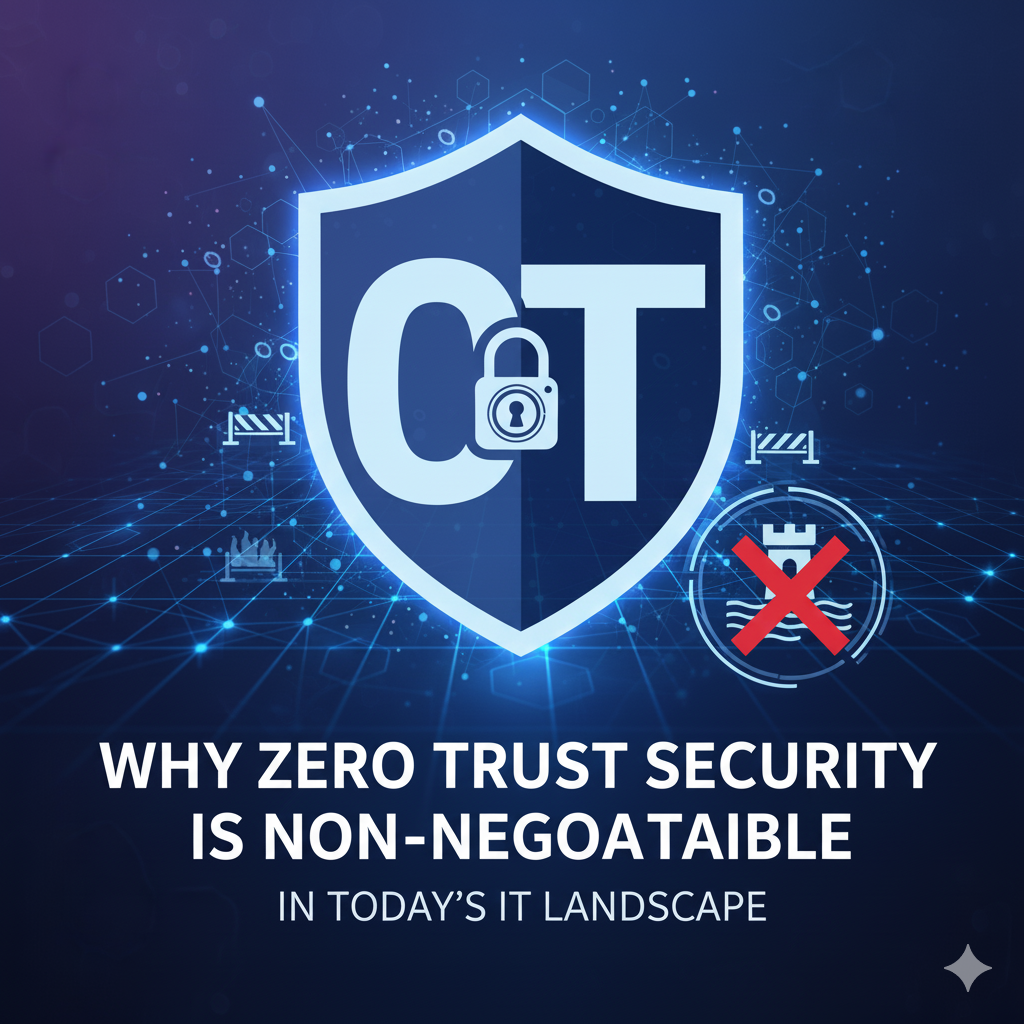Why Zero Trust Security Is Non-Negotiable in Today’s IT Landscape
As the digital world expands, so do the threats that loom over businesses. Cyberattacks are growing more sophisticated, and traditional perimeter-based security models are becoming obsolete. Enter Zero Trust Security—a modern approach that enforces strict access controls and assumes no one, inside or outside the network, can be trusted by default.
What Is Zero Trust Security?
Zero Trust Security is a strategic framework that requires validation of every user, device, and application attempting to access resources, regardless of their location. Unlike traditional models, Zero Trust operates on the principle of 'never trust, always verify.'
"Zero Trust is not a product—it’s a philosophy and an architecture that requires constant vigilance."
Key Principles of Zero Trust
- Verify Explicitly: Authenticate and authorize every access request using multiple factors.
- Limit Access: Apply the principle of least privilege to ensure users only have access to what they need.
- Assume Breach: Operate under the assumption that threats exist both inside and outside the network.
Why Zero Trust Is Essential in Today’s IT Landscape
The IT landscape has evolved dramatically, with cloud computing, remote work, and IoT devices becoming the norm. These advancements, while beneficial, also introduce new vulnerabilities. Here’s why Zero Trust is indispensable:
1. Rise in Cyber Threats
Ransomware, phishing attacks, and insider threats are at an all-time high. A Zero Trust model minimizes potential damage by segmenting the network and restricting lateral movement.
2. Remote Work Challenges
The shift to remote work has blurred the boundaries of corporate networks. Zero Trust ensures that employees can work securely from anywhere without exposing sensitive data.
3. Compliance Requirements
Regulations like GDPR, HIPAA, and CCPA demand stringent data protection measures. Zero Trust helps organizations meet these requirements by providing robust security controls.
4. Cloud and Hybrid Environments
As businesses migrate to the cloud, traditional perimeter defenses become ineffective. Zero Trust provides granular visibility and control over cloud resources.
Implementing Zero Trust Security
Adopting Zero Trust requires a comprehensive strategy and the right technologies. Here are the steps to get started:
- Assess Your Current Security Posture: Identify assets, users, and vulnerabilities in your environment.
- Adopt Multi-Factor Authentication (MFA): Strengthen user verification with MFA.
- Use Micro-Segmentation: Divide your network into smaller, isolated segments to limit lateral movement.
- Monitor and Respond: Implement real-time monitoring tools to detect and respond to threats quickly.
FAQs About Zero Trust Security
What makes Zero Trust different from traditional security models?
Traditional security models focus on securing the perimeter, assuming that anyone inside the network is trustworthy. Zero Trust, on the other hand, assumes no trust by default and verifies every access request.
Is Zero Trust suitable for small businesses?
Yes! Zero Trust can be tailored to fit organizations of any size. Small businesses, in particular, benefit from its ability to protect against growing cyber threats.
What technologies support Zero Trust implementation?
Technologies like identity and access management (IAM), multi-factor authentication (MFA), endpoint detection and response (EDR), and network segmentation are key enablers of Zero Trust.
Conclusion
In today’s dynamic IT landscape, Zero Trust Security is no longer optional—it’s a necessity. By adopting this proactive approach, businesses can safeguard sensitive data, ensure compliance, and build resilience against evolving cyber threats. Remember, in the realm of cybersecurity, trust is a vulnerability, and Zero Trust is the solution.



